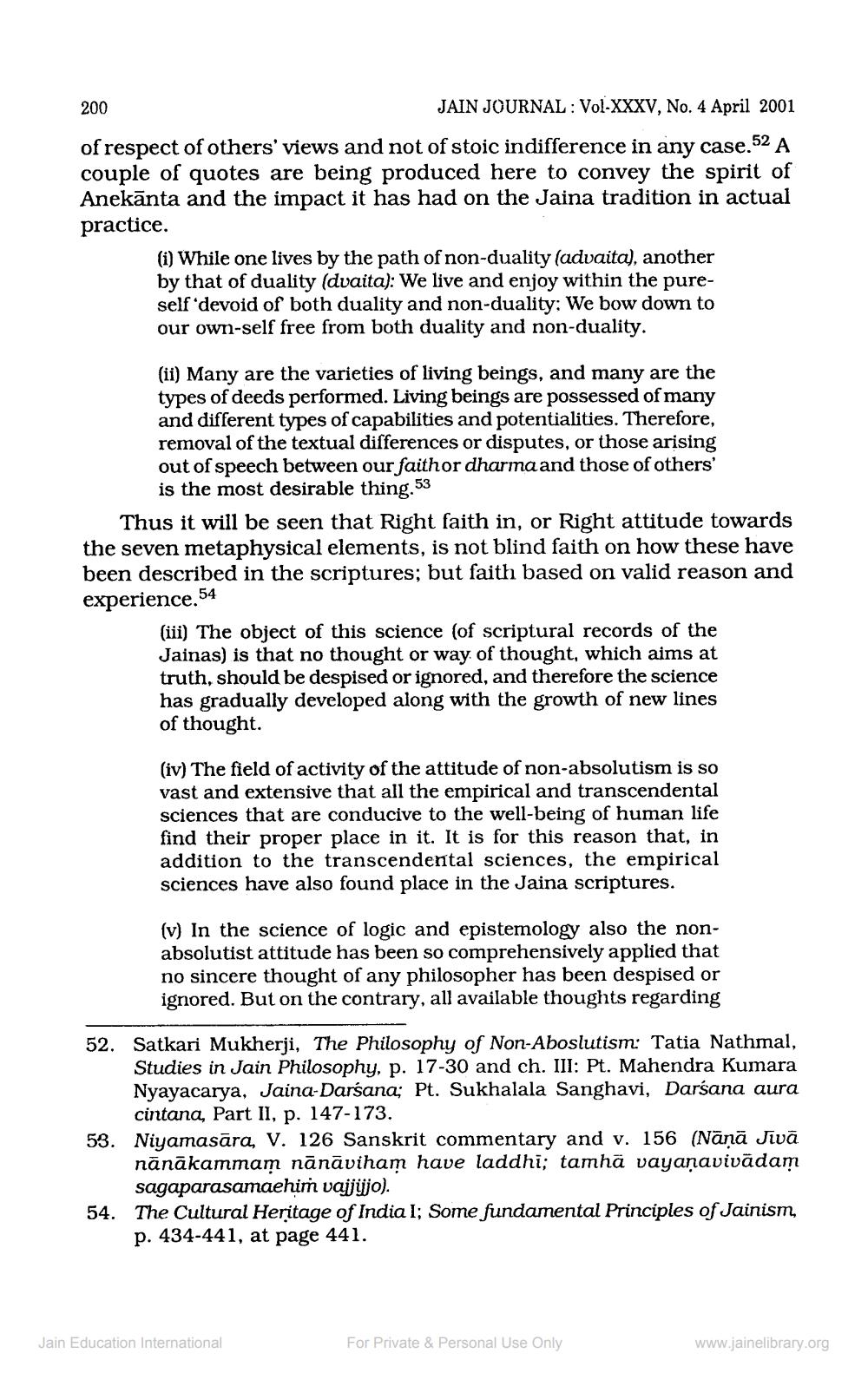________________
200
JAIN JOURNAL: Vol-XXXV, No. 4 April 2001 of respect of others' views and not of stoic indifference in any case.52 A couple of quotes are being produced here to convey the spirit of Anekānta and the impact it has had on the Jaina tradition in actual practice.
(i) While one lives by the path of non-duality (advaita), another by that of duality (dvaita): We live and enjoy within the pureself 'devoid of both duality and non-duality: We bow down to our own-self free from both duality and non-duality.
(ii) Many are the varieties of living beings, and many are the types of deeds performed. Living beings are possessed of many and different types of capabilities and potentialities. Therefore, removal of the textual differences or disputes, or those arising out of speech between our faithor dharma and those of others' is the most desirable thing. 53
Thus it will be seen that Right faith in, or Right attitude towards the seven metaphysical elements, is not blind faith on how these have been described in the scriptures; but faith based on valid reason and experience.5
54
(iii) The object of this science (of scriptural records of the Jainas) is that no thought or way of thought, which aims at truth, should be despised or ignored, and therefore the science has gradually developed along with the growth of new lines of thought.
(iv) The field of activity of the attitude of non-absolutism is so vast and extensive that all the empirical and transcendental sciences that are conducive to the well-being of human life find their proper place in it. It is for this reason that, in addition to the transcendental sciences, the empirical sciences have also found place in the Jaina scriptures.
(v) In the science of logic and epistemology also the nonabsolutist attitude has been so comprehensively applied that no sincere thought of any philosopher has been despised or ignored. But on the contrary, all available thoughts regarding
52. Satkari Mukherji, The Philosophy of Non-Aboslutism: Tatia Nathmal, Studies in Jain Philosophy, p. 17-30 and ch. III: Pt. Mahendra Kumara Nyayacarya, Jaina-Darśana; Pt. Sukhalala Sanghavi, Darsana aura cintana, Part II, p. 147-173.
53. Niyamasāra, V. 126 Sanskrit commentary and v. 156 (Nāņā Jivā nānākammam nānāviham have laddhi; tamha vayaṇavivādam sagaparasamaehim vajjijjo).
54. The Cultural Heritage of India I; Some fundamental Principles of Jainism, p. 434-441, at page 441.
Jain Education International
For Private & Personal Use Only
www.jainelibrary.org




